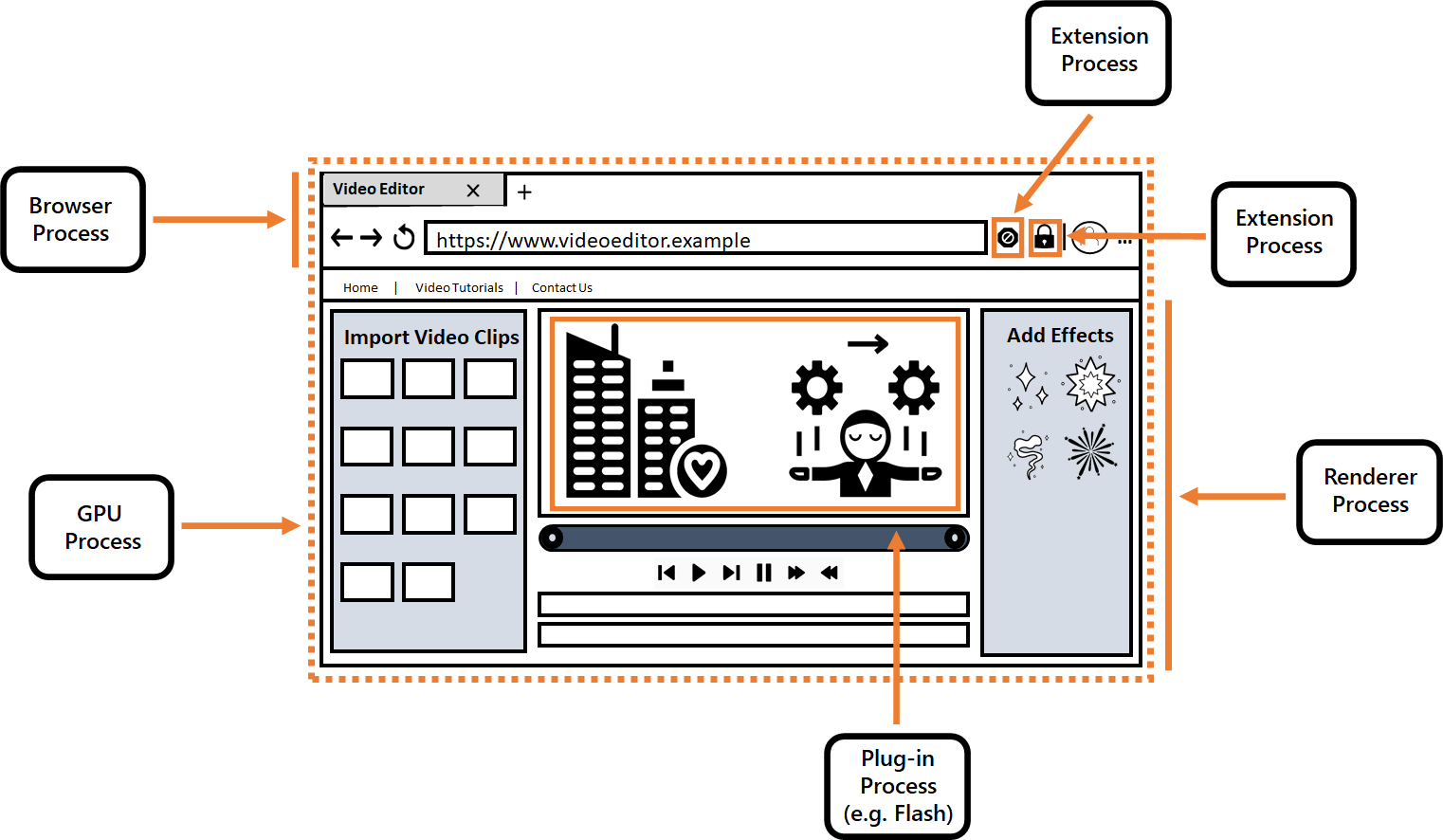The Microsoft Edge team discusses how to optimize browser memory issues
According to the Microsoft Edge team, “Browsers today are more like operating systems than document viewers. Users are performing an increasing number of tasks in the browser, and fewer in desktop applications. However, every web page, web app, and extension uses memory. As a result, users are often concerned about how memory usage impacts their experience.”
Therefore, they started with the multi-process architecture of the Edge browser and conducted an in-depth discussion on the resource solutions that the Edge browser can provide.
Most browsers nowadays adopt a multi-process architecture, which is divided into different processes at runtime. Browsers, renderers, GPUs, utilities, plug-ins, etc. all have their own processes to handle different requests.
The Edge team made a detailed enumeration of this process, assuming that four tabs and two extensions are opened in the browser:

Then the user will see 14 running processes in the Windows Task Manager, in addition to the browser process, GPU process, network service process, audio service process, and crash monitoring process, each tab and extension, including each advertisement, each has its own independent process.
In particular, the function of process isolation can effectively prevent a process from accessing the memory of another process, thereby improving the security of the browser.
After the process is isolated, you can easily view which process uses the most resources in the task manager, and then make more effective allocation and optimization of each part of the resource.
The introduction to the multi-process architecture is just the beginning. The Edge team will continue to share more information about the memory usage of the Edge browser. Combining the recent attempts of Edge and Chrome browsers in terms of memory and resource consumption, how to reduce memory usage is one of the main problems facing browsers, and it is also one of the next efforts that browsers have to make.





